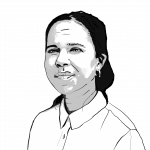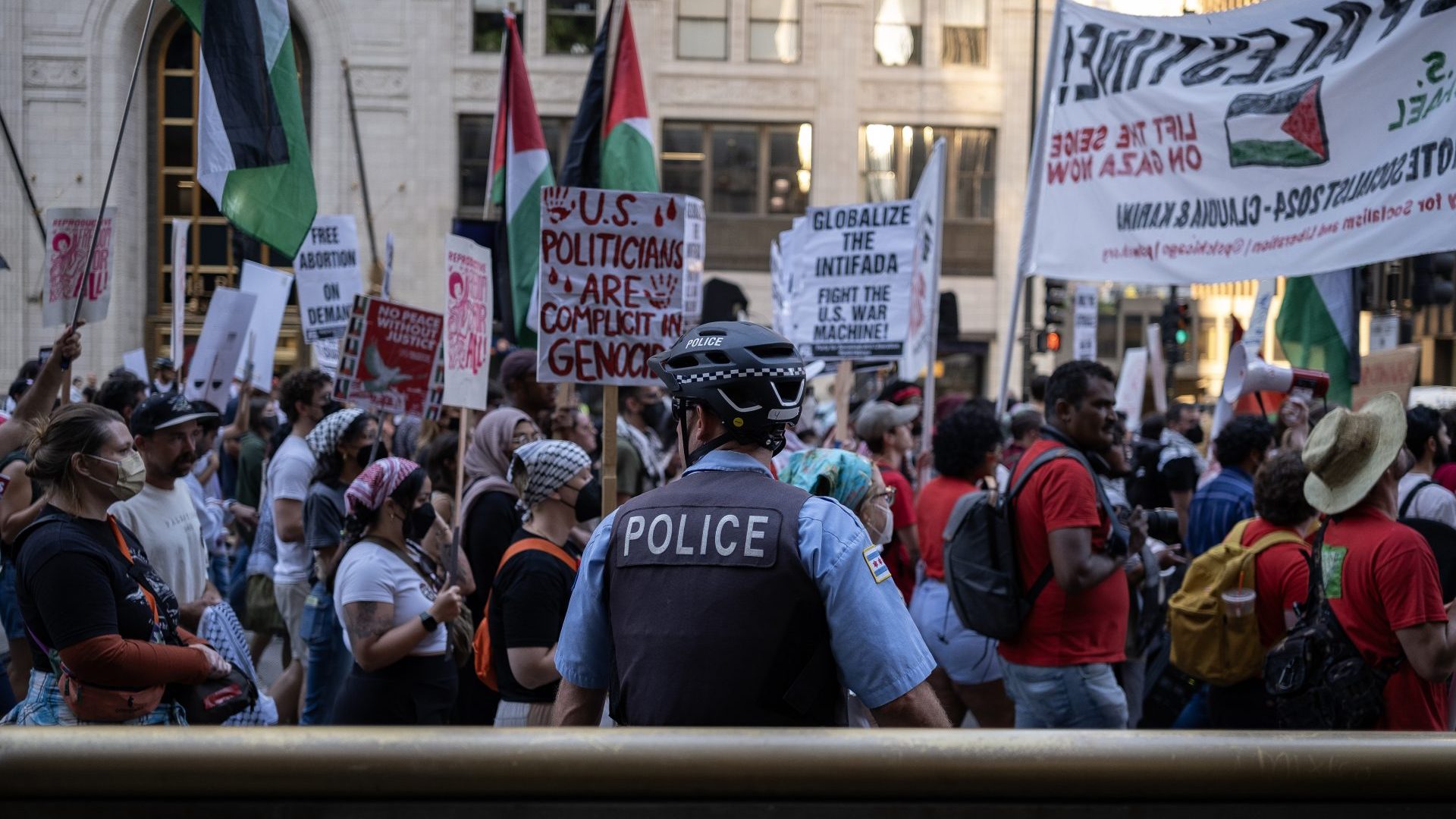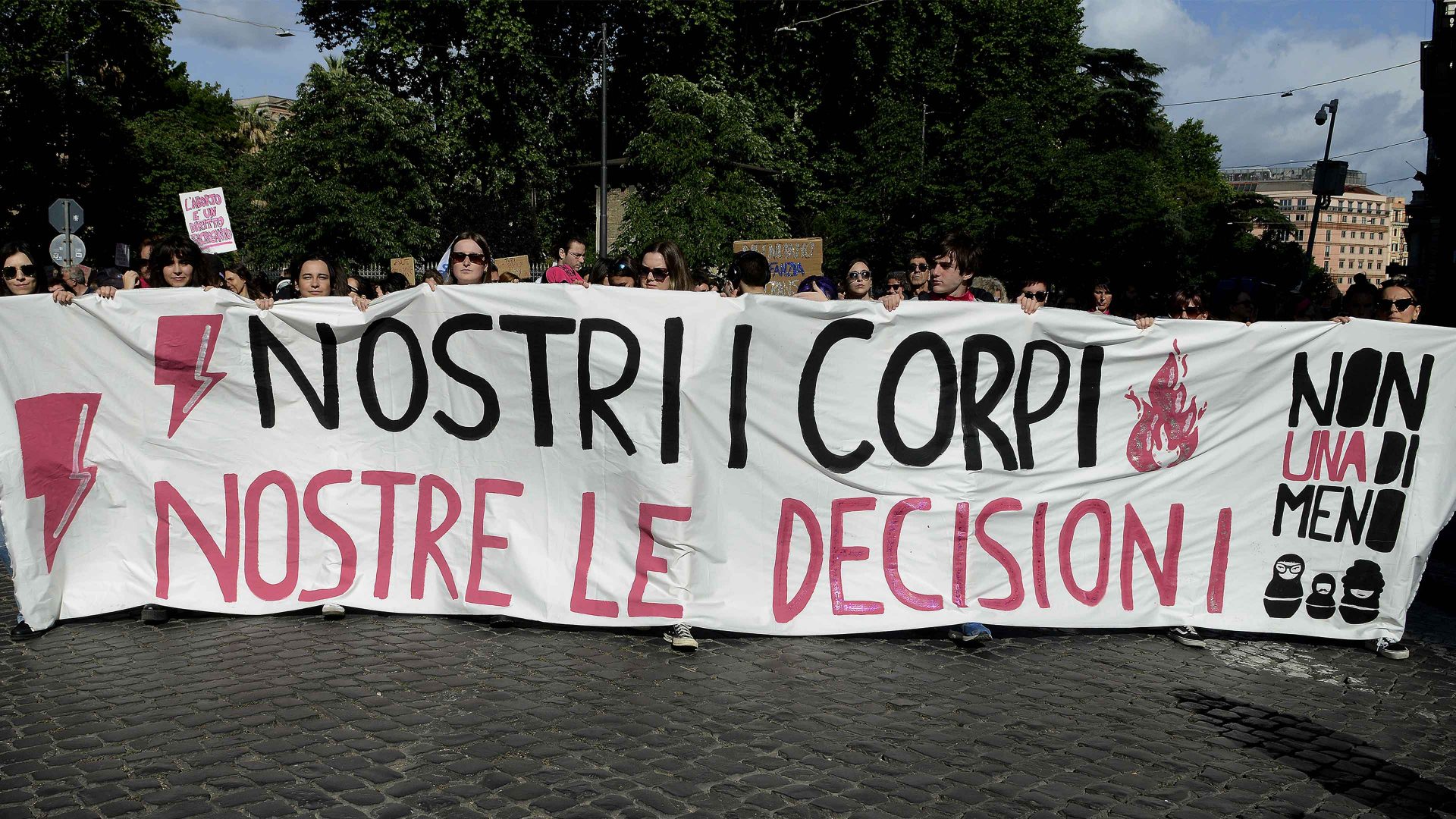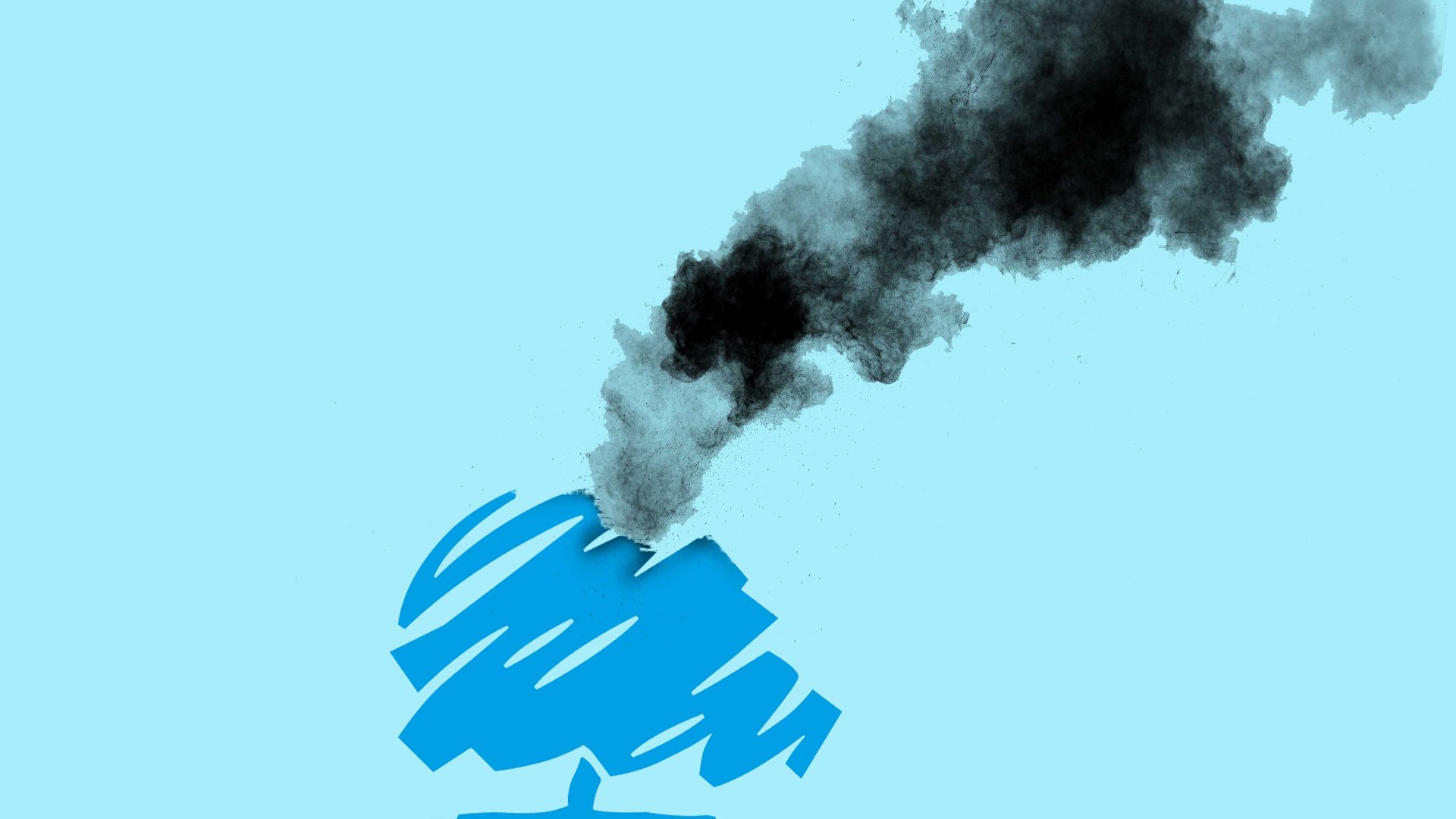When I arrived at Union Park, I didn’t know where to look first. There were keffiyehs of every colour everywhere I looked – tied around protesters’ hips, draped around necks and over shoulders, tied as bandanas and hijabs, and stretched over strollers as improvised sunshades. Cook County, which contains Chicago, is home to the nation’s largest Palestinian-American community.
Thumping Arab-language rap blared from two massive speakers looming over the crowd from both sides of the stage that rally organisers had set up for the people who would soon address the crowd. Thousands of protesters had descended on Chicago’s Near West Side neighbourhood to march to the nearby United Center where the Democratic National Convention would soon kick off. They were demanding an end to US aid for Israel.
The atmosphere in the sprawling, 13-acre park was friendly. Elderly protesters had come out in force. Making their way through the park with canes, leaning against trees for support, some of them might have been around for the notorious Democratic National Convention of 1968, when Chicago police violently cracked down on anti-Vietnam war protesters on live television.
The city and the state of Illinois are Democratic strongholds, so, it perhaps wasn’t a surprise that I didn’t spot a single pro-Trump protester on the first day of the convention. Like at the Republican Convention in Milwaukee, back in July, there were a few Christian proselytisers. One of these zealots yelled insults at the protesters, but no-one paid any attention.
It felt like a festival. Volunteers handed out water bottles, while others, in yellow fluorescent safety vests stood watch by the metal gates separating protesters from the stage. When Cornel West addressed the crowd as the nearly three-hour rally drew to a close, many attendees raced to get closer to the stage. West is an academic, an activist and a third-party presidential candidate, and his speech got some of the biggest cheers that afternoon. As he finished, dozens of journalists from the media pen in front of the stage rushed after him, as did a few rally attendees.
Each time West broke away from the fans and journalists, he seemed to get pulled back in by the crowd. The person next to me mused West must have expected that his appearance would draw so much interest. “I mean, he’s a celebrity.”
Finally, around 3pm, what had been advertised as the largest pro-Palestinian rally in US history set off down Ashland Avenue towards the United Center, where 50,000 delegates, visitors and members of the media were getting ready for the opening night of the Democratic National Convention.
The bike cops who had stood by while the rally was underway now moved down the streets alongside the protesters, using their bikes as a barrier between passersby and the protesters..
One woman seemed entirely out of sync with the other protesters’ energy. “Stop. Killing. Children,” she screamed furiously at every officer she walked past, leaving a combative pause between each word. But the mood otherwise varied between festive, solemn and passionate. Chanting “Free, free Palestine” and “From the river to the sea”, people applied sunscreen as they marched down the streets. Helicopters buzzed overhead.
In addition to signs calling for an end to aid for Israel were pro-immigration signs along with anti-capitalist, pro-labour and union messages, as well as anti-apartheid banners. When the protesters arrived at a smaller park opposite the United Center, the closest they would get to the convention site that day, they quickly spread out, with some protesters seeking shade and places to sit. Others climbed playground equipment to hoist Palestinian flags.
Two dozen protesters raced to the fences surrounding the United Center, and started banging and shaking it. The police silently watched them. One man climbed the first metal fence, but he was quickly pulled back down by other protesters.
The official protest route had been the focus of a months-long legal challenge. Organisers behind the Coalition to March on the DNC said they weren’t being allowed to march close enough to the conference venue and that this was a violation of their First Amendments rights.
I asked one of the protesters shaking the fence, a brown-haired woman with a black mask, whether she was happy with the access protesters had been given. “No,” she said, “it definitely feels like they are silencing us”.
When I asked her what she was protesting against, she looked dumbstruck. “We want the U.S. to stop funding the war,” she finally muttered.
The atmosphere became more combative. A lanky, moustachioed, ginger-haired guy was the first one to make it to the top of the fence. Looking back over his shoulder, he yelled at the other protesters: “If you want a piece of revolution, let’s go.”
One protester wearing a dark balaclava asked the woman I had spoken to earlier and her friend to help bring another fence down, which they tried to do. Several rally volunteers came over and implored everyone who had gathered by the fences to leave. “We’re gonna resume the march; let’s go,” they called out. No-one paid them any attention.
Chicago’s police force is the nation’s second-largest and perhaps one of its most notorious. It is also currently under federal oversight after a 2017 investigation that found that officers routinely violated the constitutional rights of Black and Latino Chicagoans.
So, when a group of police officers in riot gear appeared at one end of the corridor between the two security fences and slowly started moving in on the protesters, the mood became tense. But the officers looked calm, almost serene, ignoring the taunts of the protesters, who had formed a row just a few metres away. Each side seemed to be sizing the other one up. A few people started chanting, “the whole world is watching”, just as protesters had in 1968 when police attacked anti-war protesters.
Police officers also moved in on the protesters who had breached the security fence from the other side of the corridor. Some people in the crowd started throwing water bottles and the wooden sticks over the fence. Still, no response from the cops.
Before I had even realised what had happened, the helmeted officers had handcuffed the ginger-haired guy who fancied himself a revolutionary, along with two female protesters. The fences that had been pushed down were briskly put back into place.
A man who said he was with the National Lawyers’ Guild asked whether anyone knew the names of the people who had been arrested. No-one replied. One protester was encouraging people to leave. I couldn’t make out why, but he was wearing a balaclava and that made me decide that it was time to get out of there.
I moved back – and shortly afterwards, the park had completely emptied out; only the journalists and a dozen hardcore protesters had remained. Save for a few protest signs left behind in the grass there was nothing to suggest thousands of protesters had made their voices heard here a mere hour ago. Perhaps two dozen protesters had been intent on clashing with the police. But the organisers, and the safety marshalls, who looked ill-equipped for their task, had successfully kept it calm.
Or, perhaps it was never going to happen; the protesters who had marched down the street didn’t seem like bottle-slinging troublemakers, or revolutionaries. As I glanced back at the United Center, I wondered whether their protest chants would have been heard inside the convention centre where Kamala Harris, Hillary Clinton and Joe Biden would take the stage later that evening.




